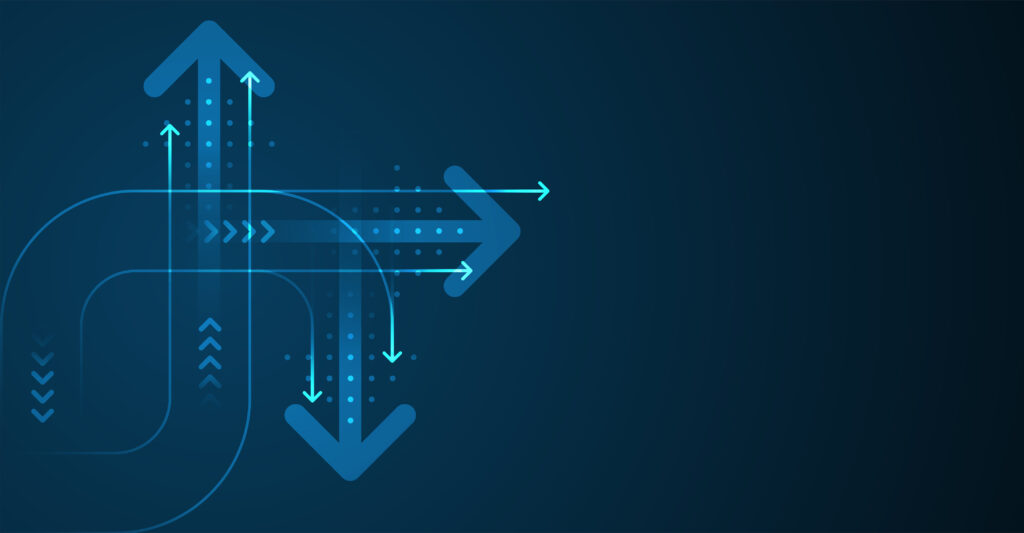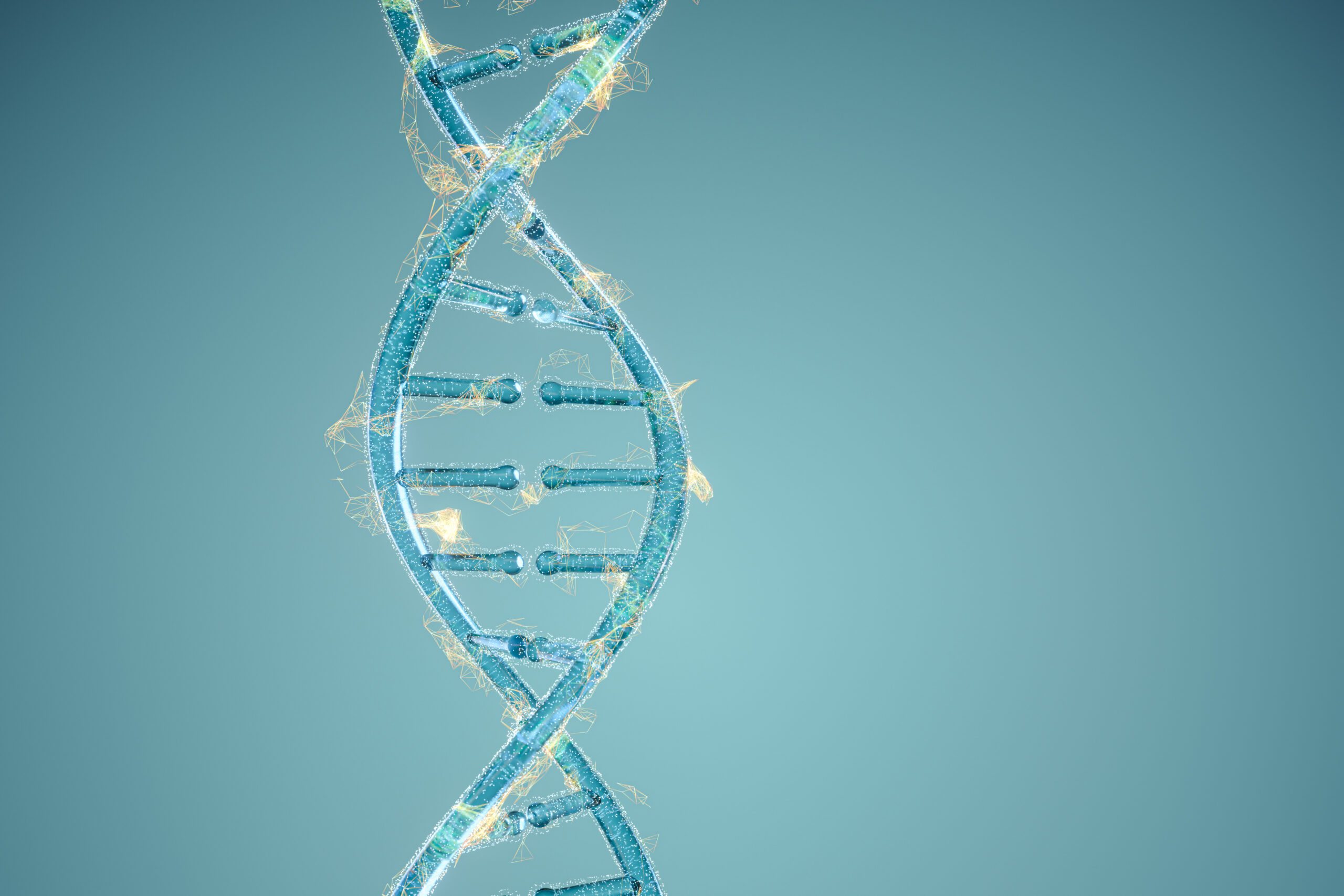The life sciences sector comprises various companies that produce products that help maintain and improve human health. Technological advances are increasingly shaping the landscape, notably the application of AI in life sciences industry.
With technological advancements, the industry is leveraging artificial intelligence (AI) to revolutionize drug development and patient care processes. AI is used in various ways, from improving the accuracy and speed of medical imaging diagnoses to identifying potential drug candidates and optimizing clinical trial design.
AI has become a game-changer for the life sciences industry in recent years. By harnessing the power of machine learning algorithms and predictive analytics, researchers and healthcare providers are gaining insights into complex biological systems that were once impossible to achieve. This has led to more targeted therapies, earlier detection of diseases, and a better understanding of the underlying mechanisms of various conditions. Some AI methods can even generate hypotheses to test through traditional methods.
As interest in this field grows, more research is being conducted on identifying specific use cases where AI can be applied most effectively.
What Are Artificial Intelligence (AI) and Intelligent Automation (IA)?

Artificial intelligence AI (AI) and intelligent automation (IA) are terms that are increasingly being used in business and industry, as well as in the media, public discourse, and everyday life. When people talk about AI, they are referring to the ability of a digital computer or computer-controlled robot to perform tasks commonly associated with intelligent beings. IA is often used interchangeably with RPA (robotic process automation).
AI combines RPA, digital, and AI technologies to automate and optimize end-to-end processes, resulting in significantly lower costs, improved performance, human productivity, and business agility. Furthermore, AI algorithms can be trained to perform tasks that require human intelligence. They can, for example, analyze large amounts of data, recognize patterns, and make predictions.
The Outlook for Artificial Intelligence in Life Sciences Markets

Most life sciences companies believe that AI will become increasingly important in the future as their field continues to develop and grow. The technology is already helping speed up and improve processes at many companies, leading to increased productivity and efficiency.
- According to 31% of life sciences executives, COVID-19 has accelerated the adoption of AI at their company, and 81% say they want their company to adopt AI even more quickly.
- Life sciences business leaders plan to focus their AI investments on discovering new revenue opportunities (46%) and reducing administrative costs (45%).
- 81% of life sciences business executives said they wished their company would adopt AI technology more quickly.
- More than 60% of life sciences companies spent over US$20 million on AI initiatives in 2019
How Can AI Transform the Life Sciences Value Chain?

The life sciences industry constantly pushes for new ways to improve healthcare effectiveness, safety, and cost. With research costs spiraling out of control and pressure mounting from the public to innovate, life sciences companies are looking to artificial intelligence (AI) to make progress on these issues.
AI in Drug Development & Discovery of Life Science
AI is transforming research and development by applying data science and machine learning to massive data sets, allowing for the rapid discovery of new molecules.
To identify promising therapies, AI in drug discovery can cross-reference published scientific literature with alternative information sources such as clinical trial information, conference abstracts, public databases, and unpublished data.
Capabilities like these have already delivered new candidate medicines in months rather than years, and they can help jump-start R&D productivity throughout the entire process. One of the notable examples is NVIDIA introducing generative AI cloud services that customize AI foundation models to accelerate research in genomics, molecular dynamics, and biology, as well as the creation of new therapeutics and proteins.
AI in Clinical Trials: Automated Digital Data Flow
When used to automate clinical trials, AI can significantly reduce cycle times and costs while improving clinical development outcomes. It can result in clinical trials that are faster, safer, and considerably less expensive.
AI algorithms combined with an adequate digital infrastructure can also clean, aggregate, code, store, and manage continuous streams of clinical trial data.
AI in Operations: Intelligent Manufacturing and Supply Chain
Life sciences companies can stream sensor and manufacturing data to analytics engines, which produce fresh insights when AI is applied to biopharma manufacturing facilities and processes. Then, using these insights, businesses can identify quality control problems, forecast process bottlenecks, and suggest proactive corrective measures.
These “self-healing” supply chain tools can help businesses respond more quickly to changes in supply and demand, reduce disruptions, and make better decisions about product distribution and new product launches.
AI in Commercial and Marketing: Personalized Customer and Patient Engagement
AI can combine and analyze patient journeys, advertising metrics, and HCP data to improve omnichannel marketing messaging and channels.
HCP engagement and dynamic personalization can be tailored based on insights from large data sets and patterns.
AI can even provide recommendations and analyze patient feedback and complaints, medical inquiries, and social media data to incorporate the patient’s voice into product iterations.
AI in Pharmacovigilance: Automated, Evidence-Based Safety Intelligence
Utilizing AI-enabled technologies such as optical character recognition and natural language processing to automate and centralize the intake of adverse event reports can reduce case documentation workload and significantly accelerate the investigation process.
The reduced manual effort can result in significant productivity savings, potentially saving millions of dollars.
AI in Cyber: Intelligent Threat Intelligence, Response, and Recovery
AI-based approaches can improve threat intelligence and prediction and enable faster attack detection and response, supplementing cybersecurity experts’ efforts.
What Are 5 Real-Life Examples of AI in Life Sciences?

Because of its applications in drug discovery, AI is already being used today in the pharmaceutical industry to improve the efficiency of research and development. There are a few stages of development for AI in the healthcare market, but there are also some cases where AI has already proven its worth at a high level.
COVID-19 — Accelerated Drug Discovery:
The application of data agility, insight, and AI is a key reason we have many viable COVID-19 vaccines and three to four therapeutics in the United States. Computing power and artificial intelligence uncovered vaccine and drug targets quickly, reducing the preclinical development of a human-trial-ready product from years to months. Life sciences executives are optimistic about AI’s ability to aid vaccine development (90%) and vaccine distribution (90%).
IBM Watson — Clinical Trial Matching:
Mayo Clinic’s early use of Watson for CTM resulted in an 80% increase in enrollment in systemic therapy clinical trials for breast cancer in the 11 months following implementation. For example, during a 16-week pilot, IBM Watson Health, Highlands Oncology Group, and Novartis used the CTM system to process 90 patients against three breast cancer protocols in 24 minutes, compared to one hour and 50 minutes for a clinical trial coordinator, a 78% reduction.
Curebase and BEKHealth — Decentralized Clinical Trials:
Curebase uses BEKHealth’s AI-powered patient-matching technology platform to identify potential trial participants from previously untapped patient populations and bring the opportunity to those patients, regardless of location. In addition, BEKHealth’s platform standardizes all patient medical data within an EMR system, including handwritten physician notes, making finding and identifying patients who meet protocol inclusion and exclusion criteria much more accessible.
Oculomics — Disease Prediction:
Oculomics combines multimodal imaging techniques and large-scale data sets to characterize macroscopic, microscopic, and molecular ophthalmic features associated with health and disease. It has aided in the identification of retinal biomarkers for a variety of conditions. For example, researchers used deep-learning models trained on data to predict cardiovascular risk factors not previously thought to be present or quantifiable in retinal images.
The OSIC Data Repository — Improved Patient Outcomes and Experiences:
OSIC Data Repository employs AI technology to create an open-source medical imaging and data repository to provide more practitioners with access to IPF data and to further democratize medicine by providing them with the same diagnostic tools as those in major research centers. In addition, the platform is intended to significantly increase the volume and usability of critical information, allowing for quicker decisions and more accurate predictions of patient outcomes.
Are There Notable Challenges to Life Science AI?

Although people have been talking about the potential of artificial intelligence to disrupt several markets in the life sciences, many challenges still need to be overcome before it becomes a reality.
Here are the most notable challenges currently faced by the life sciences industry.
- According to the Pistoia Alliance, Access to data (52%) and lack of skills (44%) are the biggest barriers to the adoption of AI and machine learning (ML)
- Data quality is another recurring challenge to AI adoption and value; in 2018, 66% said data quality was the biggest barrier to using AI in drug design, in 2017, a quarter (26%) said it is one of the biggest barriers to all AI projects
- Less than half (46%) of respondents have a team of data scientists in their company dedicated to improving data quality, and only 15% said their organization is planning to build such a team
- 47% of life sciences organizations say it is hard to keep up with the evolving AI landscape
- Cybersecurity breaches (51%) and potential bias in AI technology (44%) are the top two potential risks for AI in life sciences
Embrace AI Technology in Life Science Verticles with Help from KMS Healthcare

Need help accelerating software solutions using AI in life sciences? KMS can provide that support with our dedicated team of experienced developers.
Get in touch with our team today to learn more about how KMS Healthcare can help support your technology initiatives.

